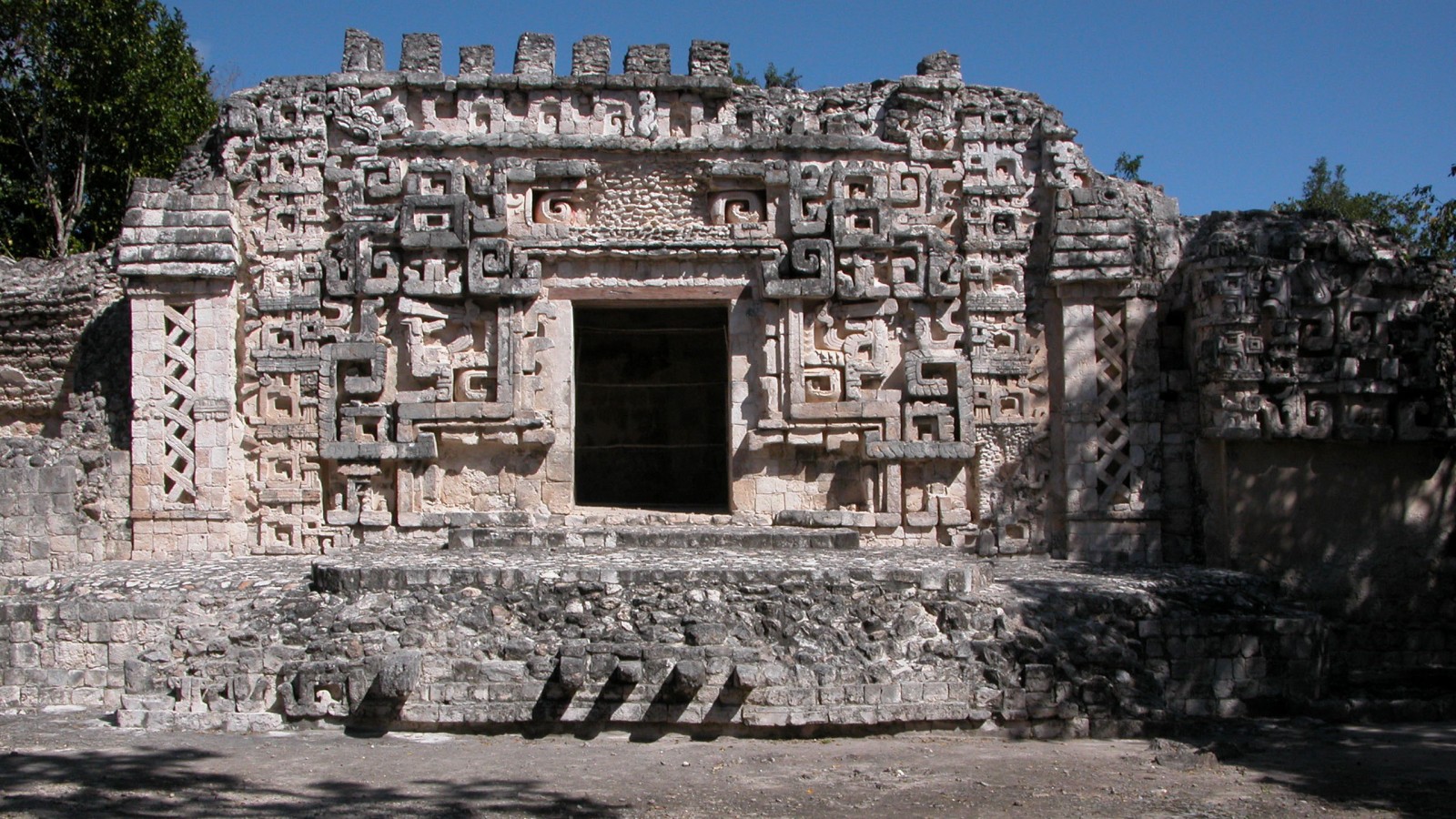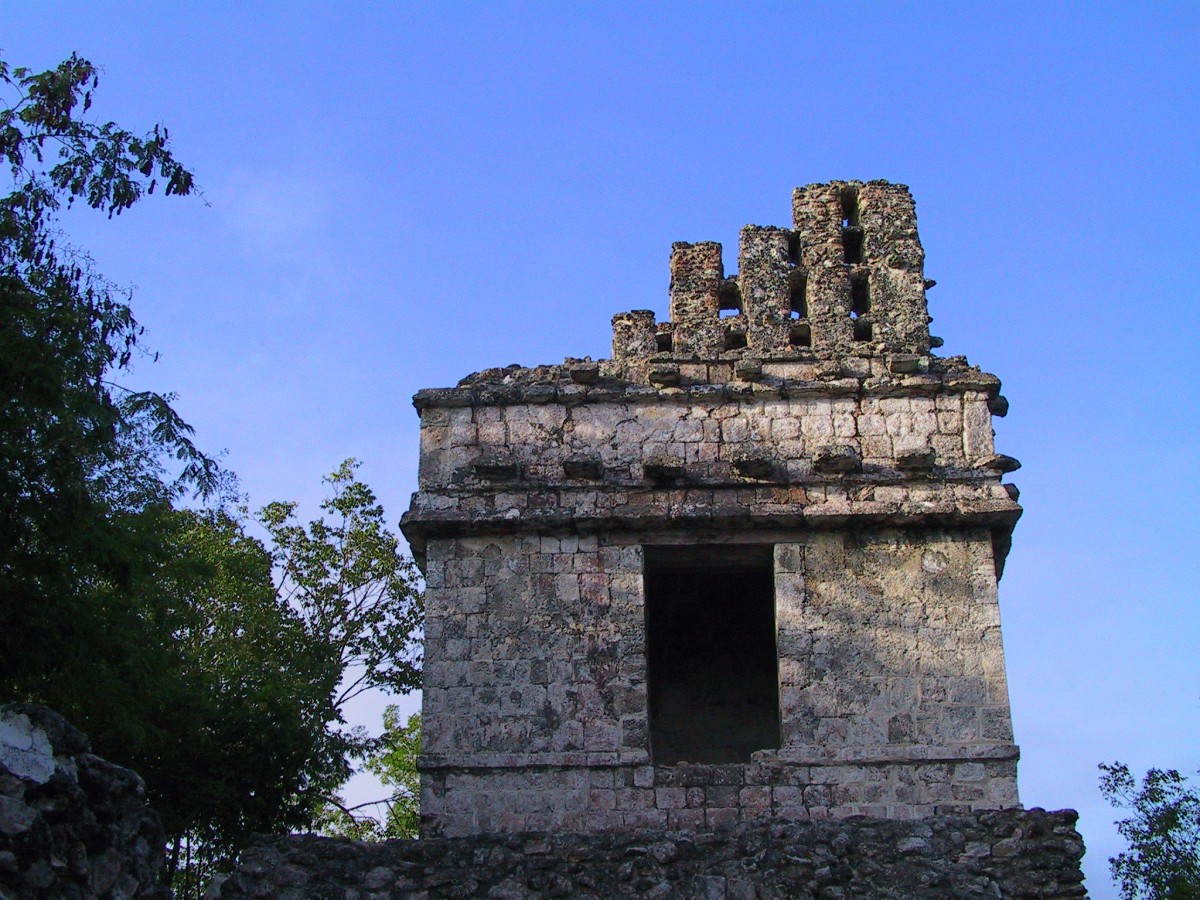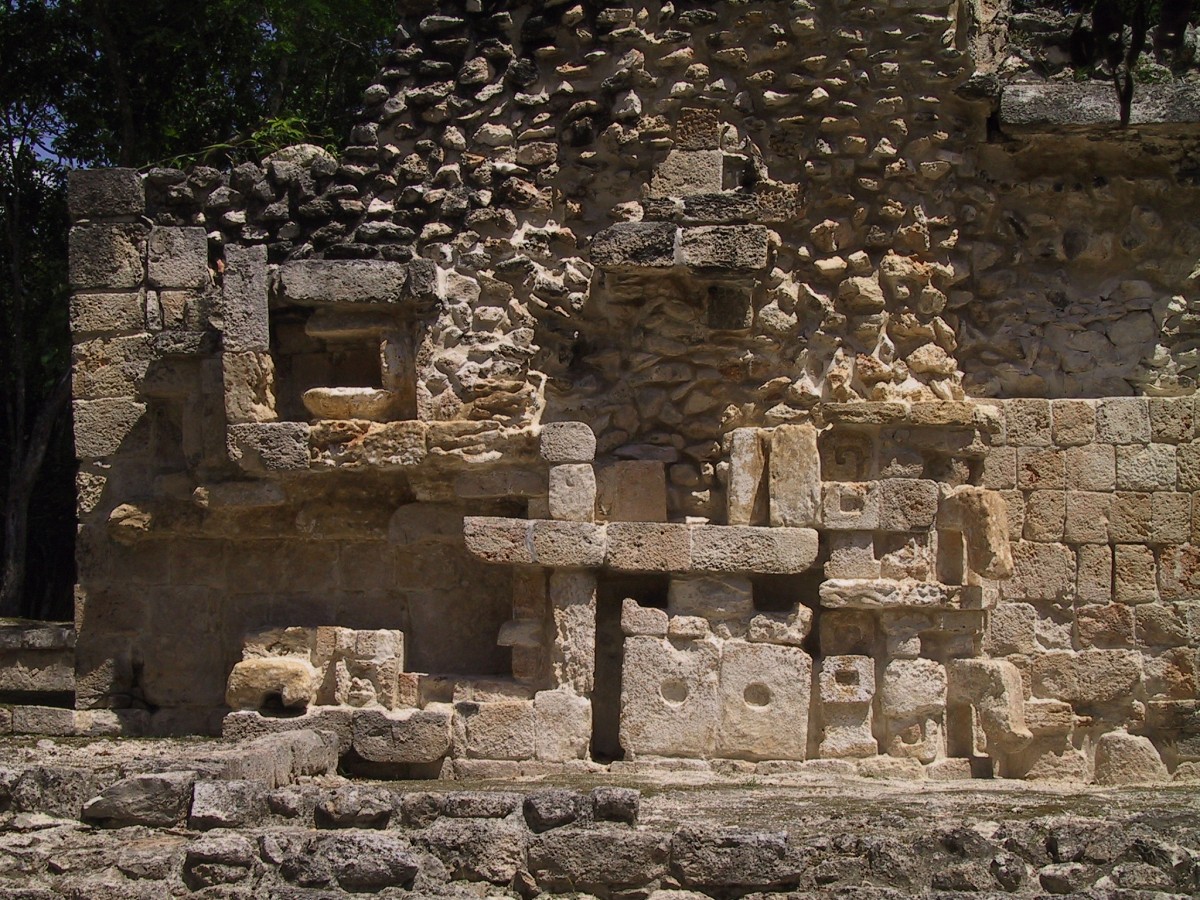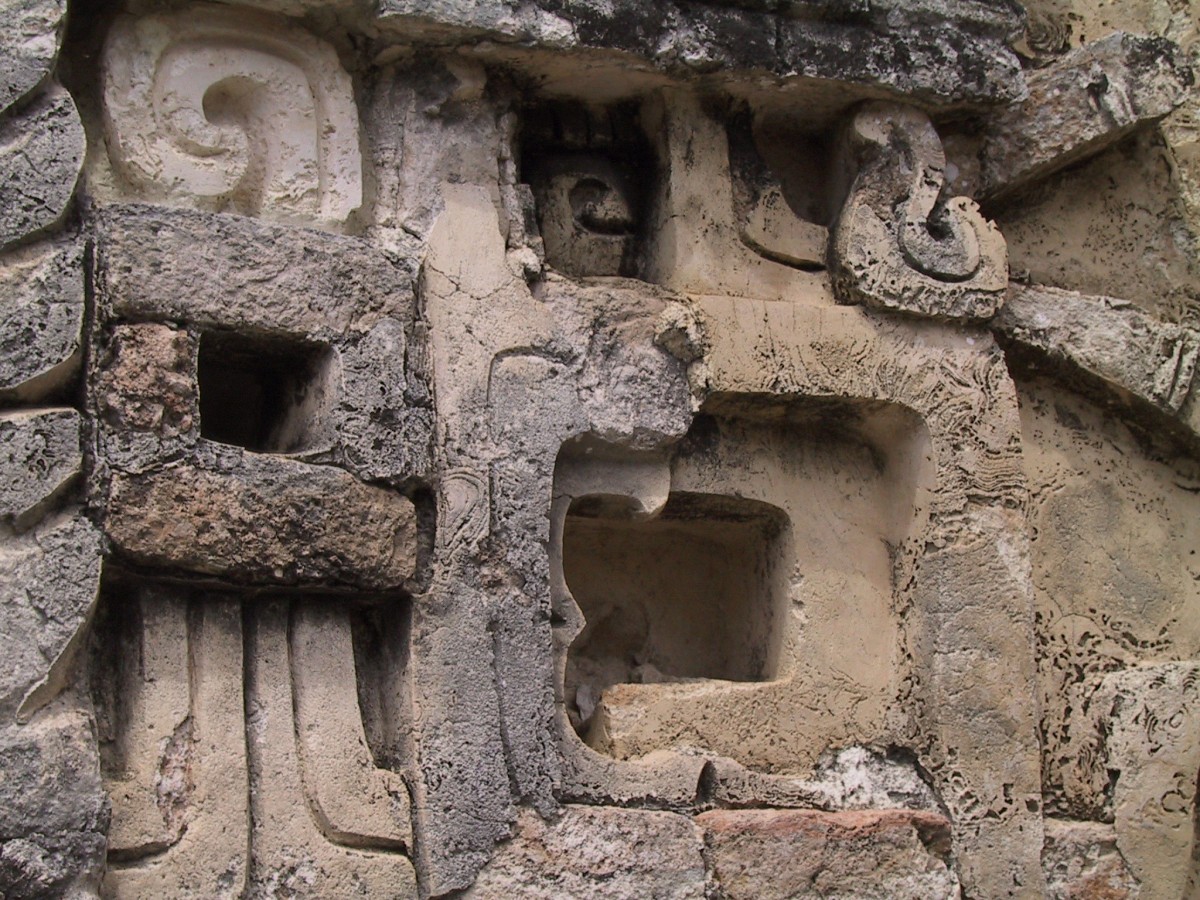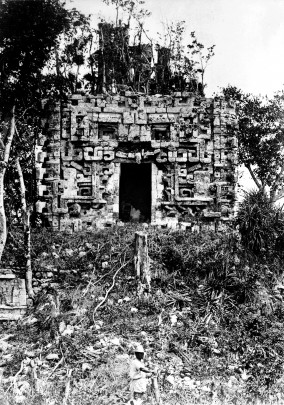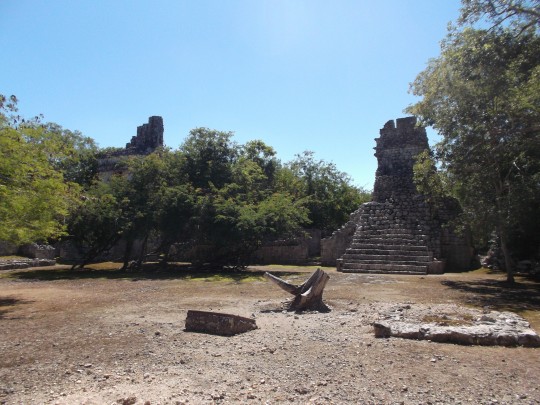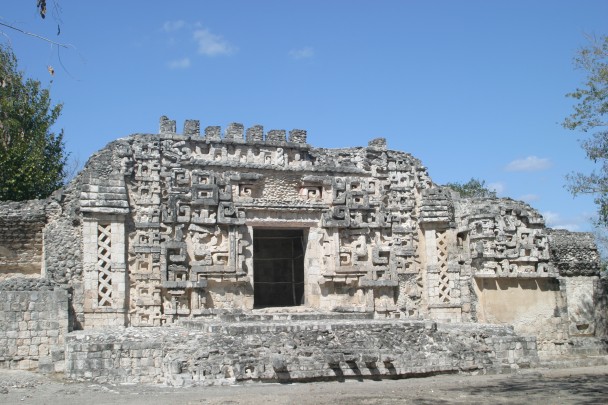This was one of the most important Mayan settlements in the Chenes region. In around 300 AD its earliest inhabitants established a presence on a hill upon which some important public and religious structures had previously stood. The hillsides were terraced and platforms created in order to provide a base for houses, built of non-durable materials. They also constructed chultuns or water cisterns to collect, store and distribute rainwater.
Hochob was probably subordinate to Dzibilnocac or Santa Rosa Xtampac, sites whose importance had grown by the Classic period; the buildings here date from between 600 and 900 AD, and reached their maximum splendor between 850 and 1000 AD.
One of the most outstanding features of the buildings are the enormous stucco facade masks of the god Itzamná, with its maw agape and the lower jaw consisting of a platform with fangs by way of an entrance. This can be seen in the main rooms of Buildings 1 and 2. In addition to these decorations are overlaying masks of Chaac, a god connected to rain. Other features include the towers crowned by two-chambered temples.
The site’s period of prosperity was interrupted by the collapse of Mayan society, a fate that befell various cities in the Yucatan peninsula, and weakened Hochob’s ruling class. As a result, the population settled elsewhere; the city was not completely abandoned though, and continued to be inhabited until after the Spanish Conquest.
- Hochob was rediscovered on an area of raised land by the Austrian explorer Teobert Maler in 1887, and was later rediscovered, in 1936.
- It was a medium-sized city that was dependent on another, more powerful settlement.
- The local population at the time used the rooms of the pre-Hispanic buildings to store their harvested crops.
- It is one of the few Maya sites in the Chenes region featuring buildings with facade masks and towers.

-
+52 (981) 816 8179
-
This email address is being protected from spambots. You need JavaScript enabled to view it.
-
FACEBOOK
-
TWITTER

